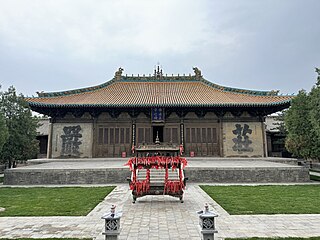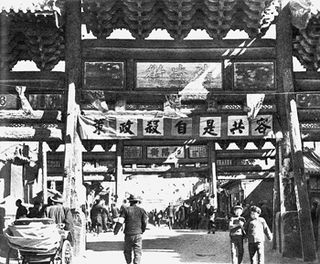7 Sights in Datong, China (with Map and Images)
Legend
Welcome to your journey through the most beautiful sights in Datong, China! Whether you want to discover the city's historical treasures or experience its modern highlights, you'll find everything your heart desires here. Be inspired by our selection and plan your unforgettable adventure in Datong. Dive into the diversity of this fascinating city and discover everything it has to offer.
The Yungang Grottoes, formerly the Wuzhoushan Grottoes, are ancient Chinese Buddhist temple grottoes built during the Northern Wei dynasty near the city of Datong, then called Pingcheng, in the province of Shanxi. They are excellent examples of rock-cut architecture and one of the three most famous ancient Buddhist sculptural sites of China. The others are Longmen and Mogao.
The Hanging Temple, also Hengshan Hanging Temple, Hanging Monastery or Xuankong Temple is a temple built into a cliff near Mount Heng in Hunyuan County, Datong City, Shanxi Province, China. The closest city is Datong, 64 kilometres (40 mi) to the northwest. Along with the Yungang Grottoes, the Hanging Temple is one of the main tourist attractions and historical sites in the Datong area. Built more than 1,500 years ago, this temple is notable not only for its location on a sheer precipice but also because as a Buddhist temple it also contains references to the other two of the three Chinese traditional philosophies or religions (三教): Taoism, and Confucianism. The structure is kept in place with oak crossbeams fitted into holes chiseled into the cliffs. The main supportive structure is hidden inside the bedrock. The monastery is located in the small canyon basin, and the body of the building hangs from the middle of the cliff under the prominent summit, protecting the temple from rain erosion and sunlight bake.
3. Mount Heng
Mount Heng, also known by its Chinese name Hengshan, is a mountain in north-central China's Shanxi Province, known as the northern mountain of the Five Great Mountains of China. Heng Shan in Shanxi Province is sometimes known as the Northern Heng Shan, and the one in Hunan Province as Southern Heng Shan. Both mountains have the same pronunciation in Chinese, and the Southern Heng Shan is also one of the Five Sacred Mountains.
4. Nine dragons wall
The glazed Nine Dragon Wall of Datong is a so-called Yingbi. It was built around 1392 in front of Prince Hongwu's palace complex, which has since been destroyed. The prince was the 13th son of Zhu Yuanzhang, the first emperor of the Ming Dynasty. On the 45.5 m long, 8 m high and 2 m wide wall there are representations of various animals, including nine dragons. Dragons are an imperial symbol in China; the number nine, on the other hand, refers to longevity. The wall served as a privacy screen and was also intended to keep evil spirits away. Datong's Nine Dragon Wall is considered the oldest and largest in China. In front of the wall is a pond with a small stone bridge.
5. Yongan temple
Hunyuan Yong'an Temple, located in the north lane of the northeast of the county seat of Hunyuan County, Shanxi Province, is one of the national key cultural relics protection units of the People's Republic of China.
6. 四牌楼
The fourth archway, located in the center of the old city of Datong City, Shanxi Province, is a building composed of four connected archways. The four arches were built in the Hongwu period of the Ming Dynasty, when the general Xu Da was ordered to build Datong City, in order to strengthen the military might, praise merit, and build this building in the center of the city.
7. Li Yumei Tomb
Li Yumei Tomb is located in the northeast of Hunyuan County, Shanxi Province, China, is the tomb of Li Yumei, the minister of the Qing Dynasty, commonly known as Lijia Tomb, was listed as a cultural relics protection unit in Shanxi Province in 1965, and was listed as the sixth batch of national key cultural relics protection units in 2006.
Share
How likely are you to recommend us?
Disclaimer Please be aware of your surroundings and do not enter private property. We are not liable for any damages that occur during the tours.






